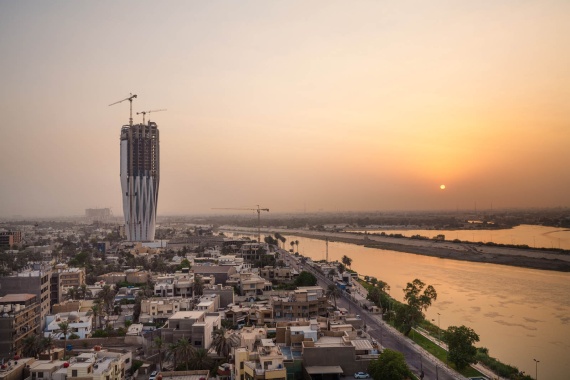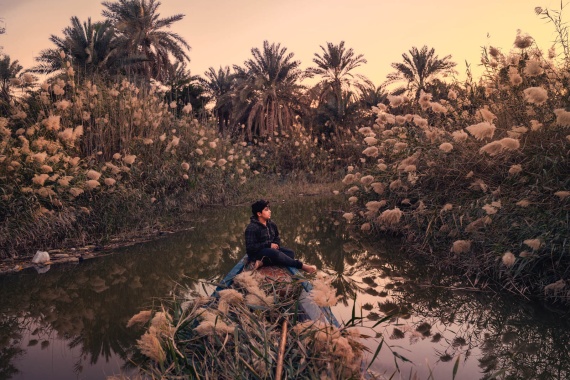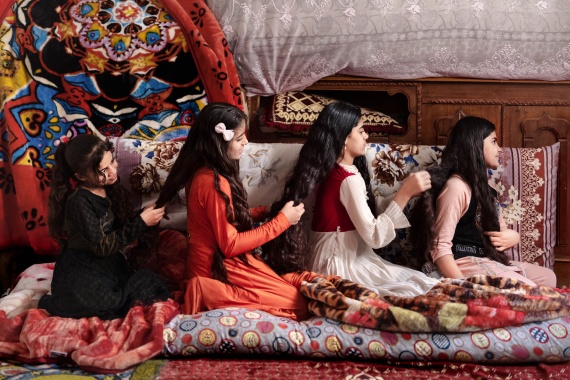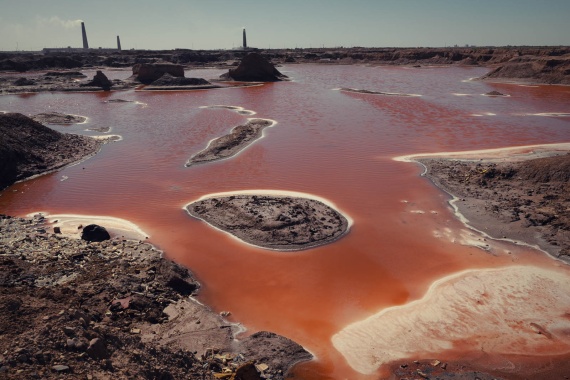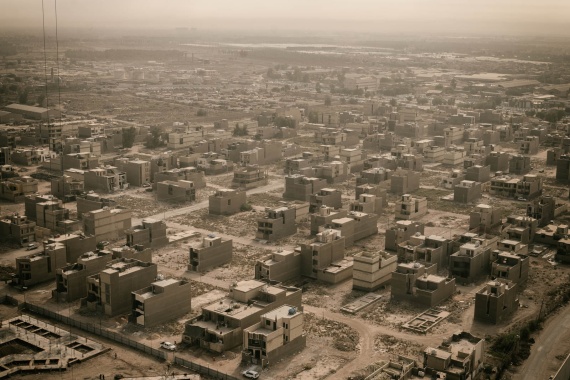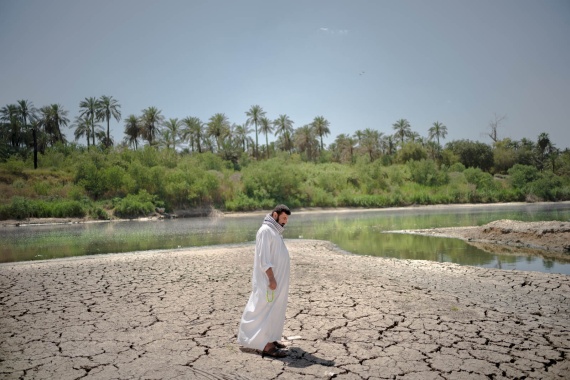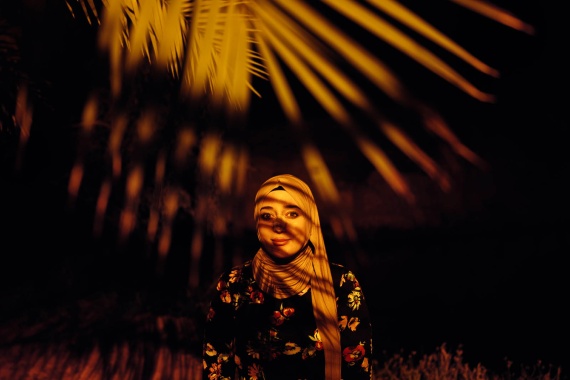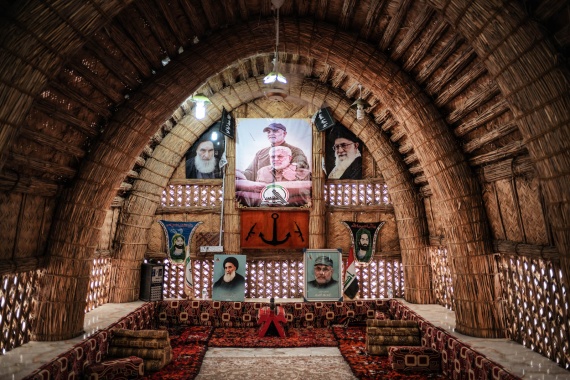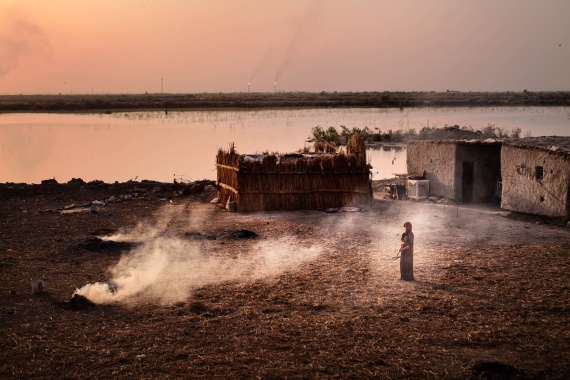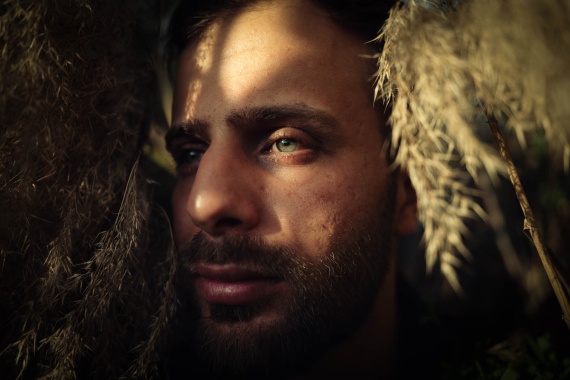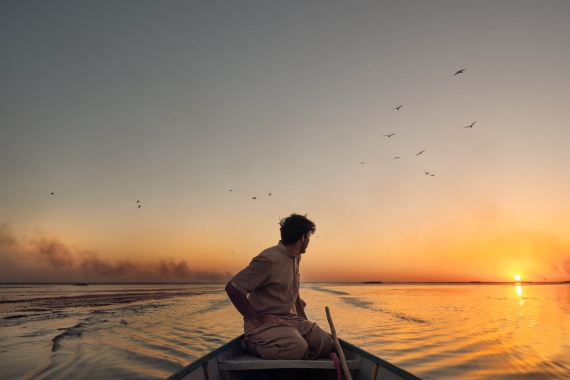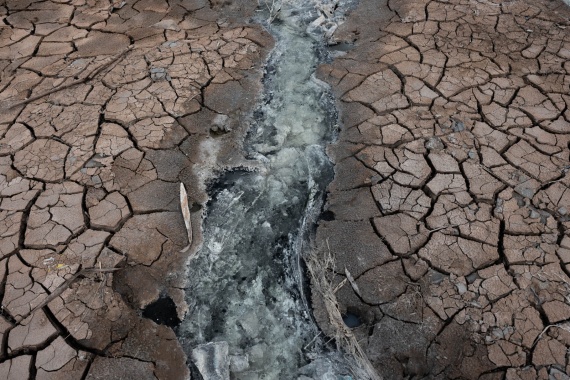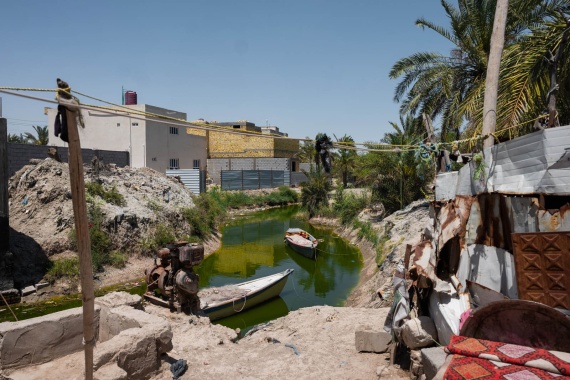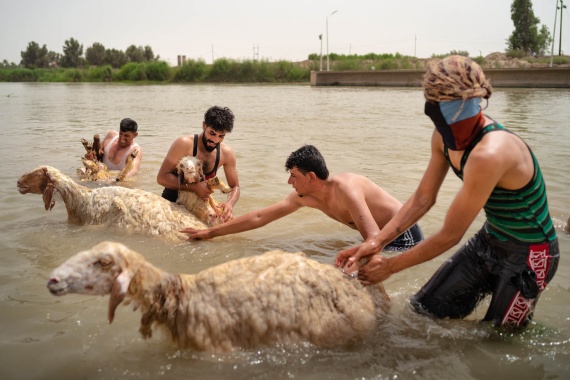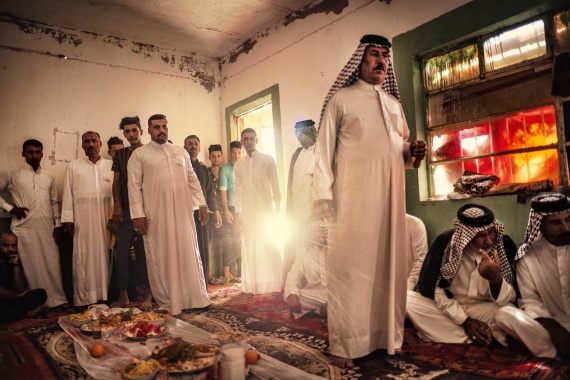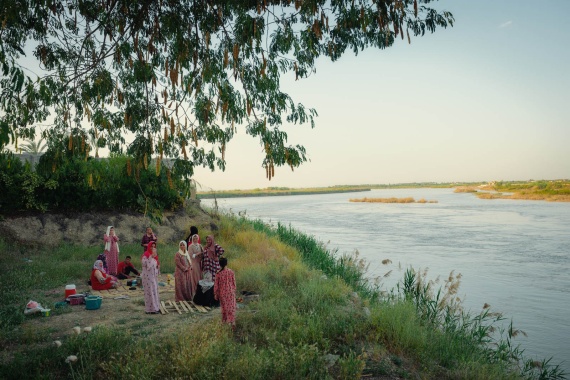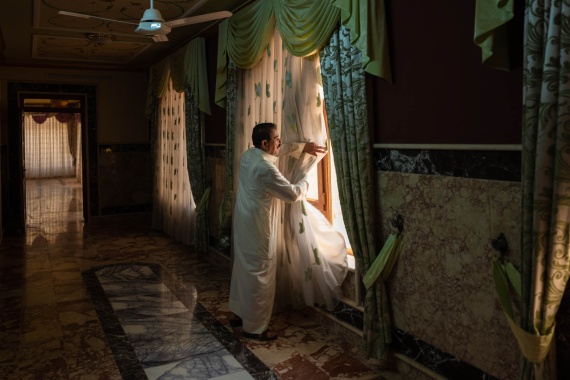Emily Garthwaite: Tears of the Tigris
Iraq is the country in the world most seriously affected by the consequences of climate change. Extreme periods of heat and diminishing precipitation have turned water into a valuable and contested resource. Along the course of the River Tigris, photographer Emily Garthwaite uncovers both the ecological and geopolitical impact, as well as the deep legacy and the resilience of the people living in the region.
The source of the Tigris is in the east of Turkey. From there it meanders for 1900 kilometres, skimming a corner of Syria, and flowing through Iraq where it joins the Euphrates at Schatt al-Arab, before emptying into the Persian Gulf. What seemed in 2019 like an almost impossible endeavour to the Iraq-based, British photographer, was finally put into practice after years of planning. In 2021, accompanied by like-minded people, Garthwaite journeyed along the river by boat for three months – from its source all the way to the sea. Over the following years, she returned to many points along the banks of the river, to document both the destruction taking place and its enduring beauty. In 2023, she decided to make the journey once more. The idea for “Tears of the Tigris” was born.
“The priority of the work is always to show what has survived, despite it all, and in doing so, to alert people to the grave situation facing the Tigris River without encouraging hopelessness.”
Iraq, which is also referred to as the cradle of civilisation, is facing the greatest challenges of our current times. The consequences of climate change brought on by humanity are in clear evidence here. During the summer months, temperatures rise to over 50° Celsius, and due to the lack of rainfall and failed harvests, the livelihoods of the around 30 million people living in the Tigris catchment area are dwindling. Drought is now prevalent around the river, where everything used to thrive in abundance. The increasingly scarce water has long become a political issue, especially because, in the case of the Tigris, it flows through several countries. As Garthwaite says, the river is a symbol of the mismanagement of water. The dams on the river and its tributaries in Turkey and Iran radically limit the water supply, and the use of water in Iraq is inefficient: the Tigris is arguably one of the most militarised rivers in the world, while industrial corporations and oil refineries discharge their wastewater directly into the ever-weakening river. Villages, towns and communities also pump their unfiltered waste into its waters, without being held accountable. Environmentalists and activists who draw attention to these abuses are threatened, tortured or driven out of the country.
“I have been doing this work for history too. As it stands today, the river is not going to survive. There’s going to be monumental shifts required for life to sustain along the river in decades to come.”
“Due to the changing climate in Iraq, we have lost places forever,” Garthwaite explains. Migration to less affected areas has already begun, and some places in the south of the country are already abandoned. Even so, in her visually stunning “Tears of the Tigris” series, the photographer focuses on the aspects of the river that remain. The cultural regions surrounding the Tigris bear witness to thousands of years of history and to traditions whose beauty must be preserved. “My relationship with the Tigris River has changed immensely over the past four years. I love the river and have had some of the most beautiful experiences of my life there,” the photographer remembers. Garthwaite speaks about turtles in the marsh landscapes, about hyenas, wild pigs and flamingos drinking from the river. She has walked among the royal tombs in Assur, the former capital of the Assyrian Empire, danced with friends on the banks of the river, listened to ancient sagas, songs and poems, and felt the freedom that is incontrovertibly reflected in her images.
Emily Garthwaite’s series was submitted by Yamna Mostefa, who belongs to this year’s group of 80 international LOBA nominators.

Emily Garthwaite
Born in 1993, Garthwaite studied Photojournalism and Documentary Photography at Westminster University in London. As a multi-disciplinary photographer, she concentrates primarily on ecological and humanitarian themes, such as displacement and life in coexistence with nature. Garthwaite has been honoured by Forbes 30 Under 30 and as Wildlife Photographer of the Year. Her work has been exhibited internationally and featured in numerous publications. She currently lives in Iraq.
Portrait: © Leon McCarron
